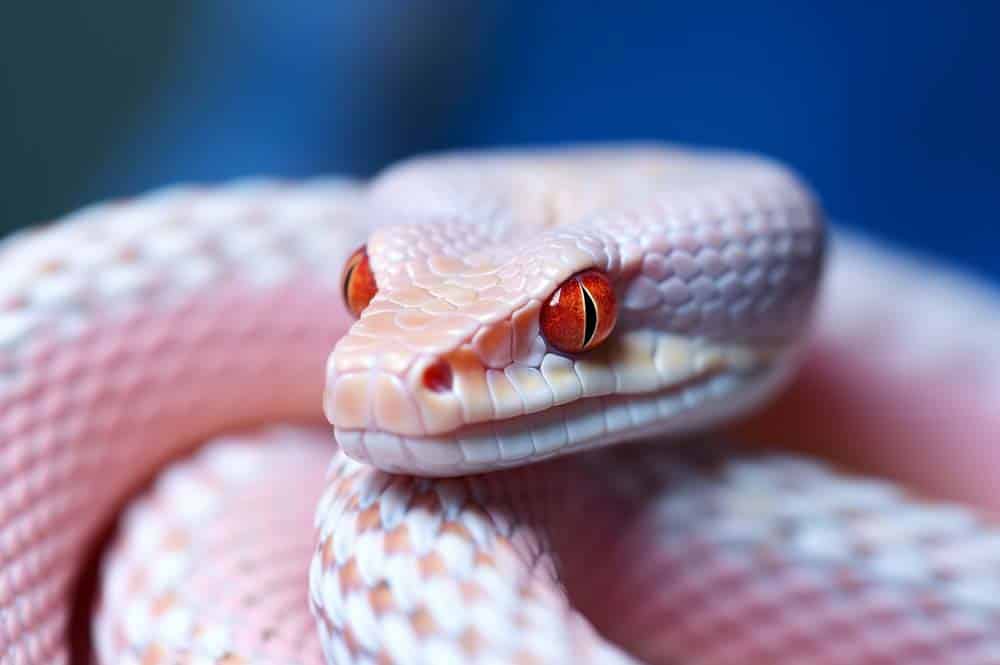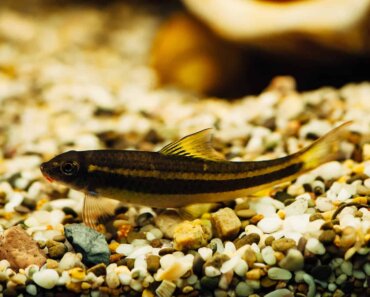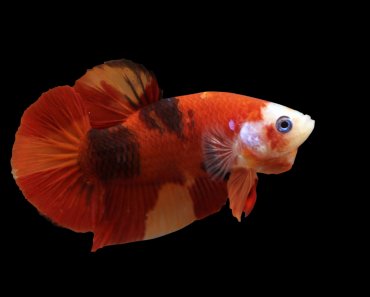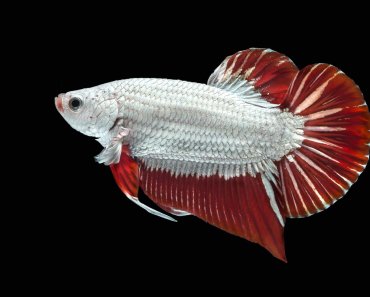
Definition of Albino Corn Snake
The albino corn snake, also known as the Pantherophis guttatus or red rat snake, is a non-venomous species of snake commonly found in North America. It is known for its unique coloration and pattern, which sets it apart from other snakes.
The albino corn snake is a genetic mutation that results in the lack of melanin, causing its scales to be bright orange or yellow with red eyes. This mutation does not affect the behavior or health of the snake.
Importance of Albino Corn Snake in the Pet Industry
Albino corn snakes are one of the most popular pet snakes in the world due to their vibrant coloration and docile nature. They are easy to care for and require minimal attention, making them ideal for both novice and experienced reptile owners alike. Additionally, they are relatively inexpensive compared to other pet snakes such as ball pythons or king snakes.
Their popularity has led to a significant increase in captive breeding programs across North America, ensuring that captive-bred albino corn snakes are available year-round for purchase as pets or breeding stock. Moreover, these breeding programs have facilitated the creation of new morphs such as snow corn snakes that further increased their appeal among pet enthusiasts.
A brief history of Albino Corn Snake
The history behind albino corn snakes dates back to 1961 when Charles Pritzel discovered a red-eyed white snake among his colony of corns at his farm in Georgia. The mutation was later named amelanistic; after several years, breeders started selectively breeding them to create more morphs like snow corns and candy cane corns.
Today there are hundreds, if not thousands, of different morphs all based on this original genetic mutation discovered by Pritzel over 60 years ago. Albino corn snakes have become one of the most sought-after reptiles in the pet industry due to their beauty, affordability, and ease of care.
Physical Characteristics
Coloration and Patterns
The Albino Corn Snake’s coloration is its most striking feature. As the name suggests, they lack pigmentation in their skin, giving them a bright white or yellow appearance. They have distinctive red eyes and orange or pinkish patterns running along their bodies.
The patterns can be either saddles or stripes, depending on the individual snake. Because of their stunning appearance, albino corn snakes are highly sought after as pets.
Size and Weight
Albino Corn Snakes are relatively small compared to other types of snakes, making them an attractive pet option for those who want a snake but don’t want to deal with a huge animal. They can grow up to 4-5 feet long but usually average around 3-4 feet in length.
They weigh between 600-800 grams at maturity. Corn snakes are sexually dimorphic, meaning males typically have longer tails and smaller heads than females.
Unique Features
One unique feature of the Albino Corn Snake is that they shed their skin frequently – about once every month or two when they’re young and once every few months when they’re older. Shedding takes about a week and is essential for growth and health as it helps remove old skin cells that could harbor bacteria or parasites.
Another unique characteristic of corn snakes is their ability to climb trees with ease due to the presence of tiny spines on their belly scales called keels which provide traction when climbing up smooth surfaces like tree trunks or walls. Corn snakes have a specialized jaw structure that allows them to swallow prey much larger than themselves whole by dislocating the joints in their skull temporarily during swallowing, making them efficient hunters despite being relatively small animals.
Natural Habitat of Albino Corn Snake
Albino corn snakes are non-venomous colubrid snakes, native to the southeastern United States. They are commonly found in a variety of habitats, including forests, grasslands, and swamps.
These snakes prefer to live in areas with plenty of hiding spots, such as under rocks or logs. In the wild, they can often be found living near streams or other bodies of water.
One important aspect of their natural habitat is temperature. Albino corn snakes are ectothermic, meaning that their body temperature is regulated by the environment around them.
They require a certain range of temperatures to function properly. In the wild, they will bask in the sun during the day to raise their body temperature and then retreat to cooler areas to regulate it.
Geographic Distribution of Albino Corn Snake
The albino corn snake’s native range includes parts of Virginia, North Carolina, South Carolina, Georgia and Florida. However, due to their popularity as pets in recent years they have been introduced into other parts of the world too.
These beautiful snakes have also become invasive species in some regions where they have been released accidentally or intentionally by pet owners who no longer want them as pets. They can survive and reproduce easily outside their native range since they are highly adaptable and can thrive in a variety of habitats.
Adaptations to Environment
Living in various habitats requires adaptation for any species; albino corn snakes have developed several adaptations that allow them to survive in different conditions. One such adaptation is coloration – albino corns are typically bright orange-red with white stripes down their backs making them stand out against green grasses or brown soil. Another adaptation is hunting strategy: these snakes rely on stealth when hunting prey because they do not have venomous fangs like some other snake species do.
Albino corn snakes use their strong sense of smell to detect prey, which includes small rodents, lizards, and other small animals. They will patiently wait for the right moment to strike and then use their sharp teeth to grab onto their prey.
Overall, albino corn snakes are adapted well for survival in wild environments as well as in captivity. Understanding their natural habitat and geographic distribution is essential when providing them with proper care as pets.
Behavior and Diet
Temperament and Personality Traits
Albino corn snakes are known for their calm and docile nature, making them an ideal pet choice for those who are new to owning reptiles. They have a gentle disposition, making them easy to handle and generally not prone to aggression.
This behavior makes them ideal for family pets, as they are unlikely to bite or attack humans if treated with respect. However, it is important to remember that all animals have individual personalities, so some albino corn snakes may be more shy or defensive than others.
Feeding Habits and Prey Preferences
As far as feeding habits go, albino corn snakes are carnivores that hunt primarily at night. They have a varied diet consisting of small rodents such as mice and rats, but they may also consume lizards or other snakes in the wild.
In captivity, owners should provide pre-killed mice or rats on a regular basis. It is important to ensure that the food is appropriate in size for the snake’s age and size.
Reproduction and Mating Behaviors
Albino corn snakes reach sexual maturity between 2-4 years of age. During mating season (typically in the spring), males will seek out females by leaving scent trails using their pheromones.
Once a female has been located, the male will begin courtship behaviors such as rubbing his chin against her body or nuzzling her head. If the female is receptive, they will mate with copulation lasting anywhere from 15 minutes to several hours.
After mating occurs, females lay eggs approximately 28-35 days later which can hatch after around two months of incubation at an average temperature of around 82°F (28°C). Hatchlings emerge from their eggs fully formed but tiny (8 inches/20 cm), and will begin to feed on prey items shortly after hatching.
Care and Maintenance as a Pet
Housing requirements for albino corn snake
Proper housing is crucial when it comes to keeping an albino corn snake as a pet. They are active reptiles and require enough space to move around comfortably. A tank or enclosure with a minimum of 20 gallons in capacity is recommended for juveniles, while adults need an enclosure with a minimum of 40-50 gallons.
The type of substrate used for the enclosure should be non-toxic, easy to clean, and comfortable for the snake. Aspen bedding or coconut fiber are great options.
The temperature inside the tank should be maintained between 75-85°F during the day and around 70°F at night using heating pads or ceramic lamps. It’s also important to provide hiding spots inside the tank, such as small caves or logs, where your albino corn snake can retreat if they feel threatened or stressed.
Feeding schedule for albino corn snake
Albino corn snakes are carnivorous and require a diet consisting solely of live prey such as mice or rats. Juvenile snakes should be fed every five to seven days while adult snakes require feeding every ten days. The size of the prey must match that of your pet’s girth size.
Overfeeding can result in obesity and other health issues, so it’s essential to keep track of how much is being consumed by weighing both your snake and their food items regularly. It’s also important to note that live prey carries risks such as biting back at your pet snake causing injuries which could lead to infections if not treated promptly.
Health concerns to be aware of with albino corn snakes
Like any other pets, Albino Corn Snakes are prone to certain health issues that may affect their lifespan if not properly addressed. Some common health problems in Albino Corn Snakes include skin infections, respiratory infections, and mites. Keeping the enclosure clean and maintaining the right temperature and humidity levels can prevent most health problems.
Additionally, regular veterinary check-ups can help you to quickly identify any potential issues before they become bigger problems. Taking care of an albino corn snake requires a good understanding of their unique needs.
Proper housing with ample space and hiding spots is crucial for their physical wellbeing, while the right feeding schedule helps maintain a healthy weight and prevent obesity. Regular veterinary visits and hygiene maintenance are also essential for maintaining optimum health in your pet Albino Corn Snake.
Breeding Albino Corn Snakes
How to breed albino corn snakes?
Breeding albino corn snakes is a popular practice among snake enthusiasts. To successfully breed albino corn snakes, it is important to make sure you have a male and female pair that are both healthy and mature enough to breed. You can determine if your snakes are mature enough for breeding by looking at their size and age.
Male corn snakes typically reach sexual maturity between the ages of 18-24 months or when they reach a length of about 2-3 feet, while females become sexually mature between 24-36 months or when they reach a length of about 3-4 feet. Once you have determined that your snakes are mature enough for breeding, you will need to introduce them into the same enclosure.
It is essential that the enclosure is big enough for both of them to move around comfortably without feeling cramped. Make sure to provide them with adequate hiding spots and plenty of clean water.
What are the challenges involved in breeding albino corn snakes?
Breeding albino corn snakes comes with its own set of unique challenges. One of the biggest challenges is determining if your male and female pair are compatible for breeding. Sometimes, even if they seem healthy and mature, they may not show any interest in each other or exhibit mating behaviors.
Another challenge can be getting your female snake to lay eggs after mating has occurred. Some females may not produce viable eggs or may not produce any eggs at all despite successful copulation.
Taking care of baby albino corn snakes can be challenging as well, especially if it’s your first time caring for newborn reptiles. They require special care such as maintaining proper temperatures and humidity levels in their enclosure, feeding them small prey items such as pinky mice or fuzzies based on their size/age, and making sure they have adequate hiding spots to feel safe.
How to take care of baby albino corn snakes?
Taking care of baby albino corn snakes requires attention to detail and patience. The first thing you need to do is make sure they are housed in an enclosure that provides the right temperature and humidity levels.
The optimum temperature range for newborns is between 80-85 degrees Fahrenheit with a humidity level of around 60-70%. Make sure to provide them with plenty of hiding spots as they are vulnerable and need a place to feel secure.
When it comes to feeding, baby albino corn snakes should be fed small prey items such as pinky mice or fuzzies depending on their size/age. It’s important not to overfeed them or force feed them as this can lead to health complications such as regurgitation or obesity.
Keep a close eye on their overall health and growth progress. If you notice any abnormal behavior or symptoms such as lethargy, loss of appetite, or difficulty shedding, consult with a veterinarian who specializes in reptiles immediately.
Popularity among Pet Owners
Why are Albino Corn Snakes popular pets?
Albino Corn Snakes are one of the most popular breeds of pet snakes due to their unique physical traits, easy adaptability to new environments, and relatively low maintenance requirements. Unlike other types of pet snakes, albino corn snakes have a calm temperament and rarely display any form of aggression towards their owners or other animals. This makes them an ideal choice for families with children who want a pet reptile that is safe and easy to handle.
Another reason for the increased popularity of albino corn snakes as pets is their striking coloration. The bright orange and yellow hues with the white patterned stripes make them a visually appealing addition to any household, especially for those who love exotic-looking animals.
Additionally, albino corn snakes do not grow too large in size, usually reaching up to 5 feet in length at most. This makes them suitable for living in smaller enclosures that can easily fit into an apartment or home.
What makes Albino Corn Snakes different from other types of pet snakes?
One major difference between albino corn snakes and other types of pet snakes is their calm demeanor. Unlike some species that tend to be nippy or aggressive towards humans, albino corn snakes are docile creatures that seldom bite even when threatened. They also have a great tolerance for being handled by owners or visitors which makes them a great option for beginner snake keepers.
Another differentiating factor between albino corn snakes and other species like ball pythons or king cobras is in their dietary requirements. Albino corns love eating rodents such as mice and rats which can be bought easily at most feed stores or online pet shops without breaking the bank unlike some species whose diet may include live prey like rabbits which can be challenging sourcing.
Conclusion
Albino Corn Snakes are a fantastic pet choice for those who want an exotic and visually appealing snake that is easy to take care of and handle. Their calm temperament, unique coloration, and low maintenance requirements make them an excellent addition to any household that can accommodate them. Whether you are a first-time snake owner or an experienced reptile enthusiast, albino corn snakes offer something unique in the world of pet snakes.


























